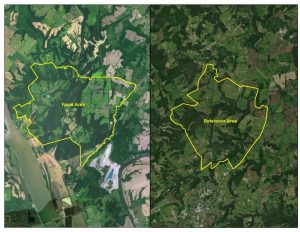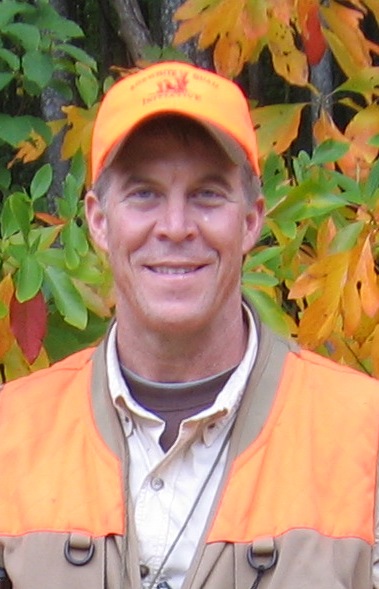“There are now 21 states participating in the [CIP] program and the future of bobwhite recovery may rely on how well these efforts document habitat’s effectiveness and how well those positive effects are marketed.” K. Marc Puckett, Virginia Department of Game and Inland Fisheries
 Learning from mistakes of the past can improve the future; failing to learn and adapt is simply irresponsible and a guarantee of future failures. The NBCI Coordinated Implementation Program (CIP) combines lessons from the past with the science of today to create the largest and best network of bobwhite restoration demonstrations in history. The CIP is more than just a focal area program; it may well be the gateway to the future of bobwhite restoration.
Learning from mistakes of the past can improve the future; failing to learn and adapt is simply irresponsible and a guarantee of future failures. The NBCI Coordinated Implementation Program (CIP) combines lessons from the past with the science of today to create the largest and best network of bobwhite restoration demonstrations in history. The CIP is more than just a focal area program; it may well be the gateway to the future of bobwhite restoration.
Ultimately, the CIP is envisioned as the springboard toward the NBCI vision of widespread huntable wild quail populations that can lure young and old alike outdoors with bird dogs to enjoy time-honored outdoor traditions.
Typical bobwhite management of the past—opportunistically adding undocumented small patches of habitat scattered haphazardly across vast landscapes—may boost bird numbers on a field or site, but the effects were usually unmeasurable at any larger scale, while overall populations continued declining. To improve on that approach, managers began trying to concentrate habitat efforts and improvements into defined focal areas to restore and document a critical mass of habitat at a scale sufficient to produce measurable population-level results.
Yet, without strategic vision and clear guidance in place, many focal area approaches have suffered shortcomings, such as:
- focal areas too small to affect or sustain a population, or too big to manage in the near term;
- poor landscape context, with low chance of successful management;
- inadequate agency leadership, commitment, or concentration of resources;
- no population goals, habitat objectives, or timelines;
- no consistent, scientifically valid monitoring;
- unrealistic expectations for “success;”
- weak coordination of partner support and landowner participation;
- lack of patience, perseverance, and follow-through.
The CIP strives to rectify such shortcomings. In simplest terms, the CIP is a habitat-based focal area program designed by quail researchers and managers using the best current science and hard-knocks lessons. In reality, it is much more. The CIP aims to visibly demonstrate one of the most basic concepts of wildlife conservation—that bird populations respond to management of suitable habitat. Here’s why the CIP matters so much:
- Consensus approach – Dozens of researchers and managers from many states, organizations, and institutions—under auspices of the National Bobwhite Technical Committee—spent two years developing the CIP as the best compromise presently attainable for implementing quail focal areas successfully across the diverse breadth of the bobwhite range. Perfect? No. A milestone advancement? Yes! Adaptive and improvable as we learn more? Absolutely!!
- Turnkey package – The CIP is designed to provide guidance and support to states and partners from the beginning to the end of designing and implementing a bobwhite focal area, with clearly defined expectations, procedures, and outcomes. It features:
- minimum acreage and habitat standards for sustaining a viable quail population long term;
- a scientific experimental design with treatments and reference areas;
- population goals and habitat objectives, set by the states;
- required standardized monitoring for quail, songbirds, and habitat suitability;
- technical assistance, plus database storage, management, and reporting services provided by NBCI;
- active data analysis that complements an adaptive resource management model.
- Designed for success in near term – The nation’s bobwhite conservation community is backed against a wall. We need success stories sooner than later, and cannot afford continuing disappointments. The CIP is designed to optimize the chances of documenting and showcasing restoration successes over a defined 5- to 10-year time-frame.
- Understand shortcomings – Even following the best guidance, some CIP focal areas may not perform as hoped. But, the CIP design standards and required monitoring of bobwhites, songbirds, and habitats on both treatment and reference sites will provide vital data needed to begin understanding varied outcomes and illuminating needed habitat improvements. The bobwhite community will benefit from such experience and knowledge, and thus will be able to raise our game at a faster pace.
- Tangible “shiny thing” – A CIP focal area is a definitive project that offers numerous practical ways for partners to get involved and feel a valuable part of something bigger. Thus, the CIP has proven to be able to attract, coalesce, and motivate varied partners such as national NGOs, local sportsmen’s clubs, researchers, landowners, federal agencies, local college biology clubs, as well as various state conservation agencies.
- Bigger than bobwhites – The CIP provides a monitoring protocol as well as firm expectations that several priority grassland birds (as determined by each state) be monitored along with bobwhites, to document songbird responses to focal area habitat restoration and management. Being inclusive means CIP is bigger than just bobwhites, and thus is even more important; it also helps boost and diversify partnerships.
- Restoration path for extirpated areas – CIP provides the first clear roadmap toward and standards for restoring bobwhites in regions where wild bobwhites are extirpated. That need is increasing in several states.
- Defining “success” – CIP requires a bobwhite population goal be set as a benchmark, thus forcing biologists to confront the difficult and long-debated question of defining a successful bobwhite restoration. A biological success is presently defined in the bobwhite literature as sustaining a fall population of 800 birds over 99 years, a yardstick also referred to as a viable population. A cultural success may be something more, such as a huntable population, or one capable of serving as a source population for translocations. The specific concept of a huntable population is widely variable, depending on state, region, landownerships, and expectations.
- Attract new funding – The tangible, turnkey CIP package promises quantifiable metrics, reliable data, and measurable outcomes from defined management prescriptions. This uncommon complete package offers the compelling prospect of return on investment, and is already starting to attract new interest and new funding to bobwhite and grassland conservation.
- Commitment – The CIP expects a minimum 10-year commitment to its focal areas, which is longer than innumerable failed quail focal areas received in the past. Bobwhite restoration at the scale envisioned by NBCI is a generational endeavor; thus, 10 years still is a relative blip, but a longer, improved blip.
- Competition – The CIP can introduce a new, constructive element—and maybe even some fun!—to bobwhite restoration: a healthy competitive spirit among states, and among CIP focal areas and their partners.
- Public interest stories – Each CIP focal area is a story with its own unique combination of landscapes, histories, landowners, partners, personalities, successes, and lessons learned. Each successful CIP story provides another compelling marketing opportunity for native grassland conservation, bobwhite restoration, partnerships and reinvigoration of the treasured bird hunting recreation.
- Poised to convince – Among the hurdles confronting the NBCI community is winning over a constituency of sportsmen, landowners, agency administrators, commissioners, and politicians who are skeptical of the usual answer that habitat is the solution to the quail problem, while seeing little convincing evidence. The entire CIP is designed as a massive scientific experiment to answer scientific questions, but also to provide convincing contemporary evidence that habitat still produces birds. For various reasons, the list of those who may need convincing is long, including sportsmen, landowners, outdoor communicators, state agency administrators and commissioners, grantors, state legislators, politicians, and federal agency administrators in DC… and even stressed-out, overworked and underappreciated field biologists.
- Restore hope –The CIP is designed not just to convince skeptics, but also to restore their hope, and thus build stronger foundations of public anticipation, enthusiasm, and support. Without public hope, there is no hope for the NBCI mission.
- Strong first step – From the beginning, the CIP is envisioned as a jump-start means toward a much bigger and more important end: widespread restoration of sustainable, huntable populations of wild bobwhites and vibrant native grassland ecosystems across at least 25 states. Once the modest-sized CIP focal areas have made their case, the stage is set to magnify the CIP effort to create a larger movement that can replicate such successes on larger focal landscapes and eventually across vast focal regions. One solid step at a time, starting with the CIP focal areas.
The NBCI’s CIP is the best and most comprehensive collective effort ever undertaken by bobwhite managers. To date, about 19 to 21 states (depending on how we count) have embraced and are acting on the CIP concept, establishing 24 projects that include 45 focal and reference areas and more than 1,000 bird/habitat monitoring points. Early returns already indicate an average 80+% increase in coveys on managed focal areas compared with the unmanaged reference areas.
Those individuals and states stepping up with resolve to adopt and implement the CIP are the new generation of leaders across the entire bobwhite and grassland bird movement. They are the innovators, the seekers of truth—using a transparent, accountable, and adaptable system—about the linkages between best management practices and bird populations. These state/federal/NGO/private leaders are playing central, coordinated roles in the long-term future of bobwhite recovery and in the resurrection of a cherished, if faded, hunting tradition.




